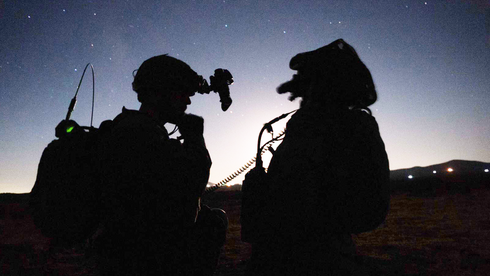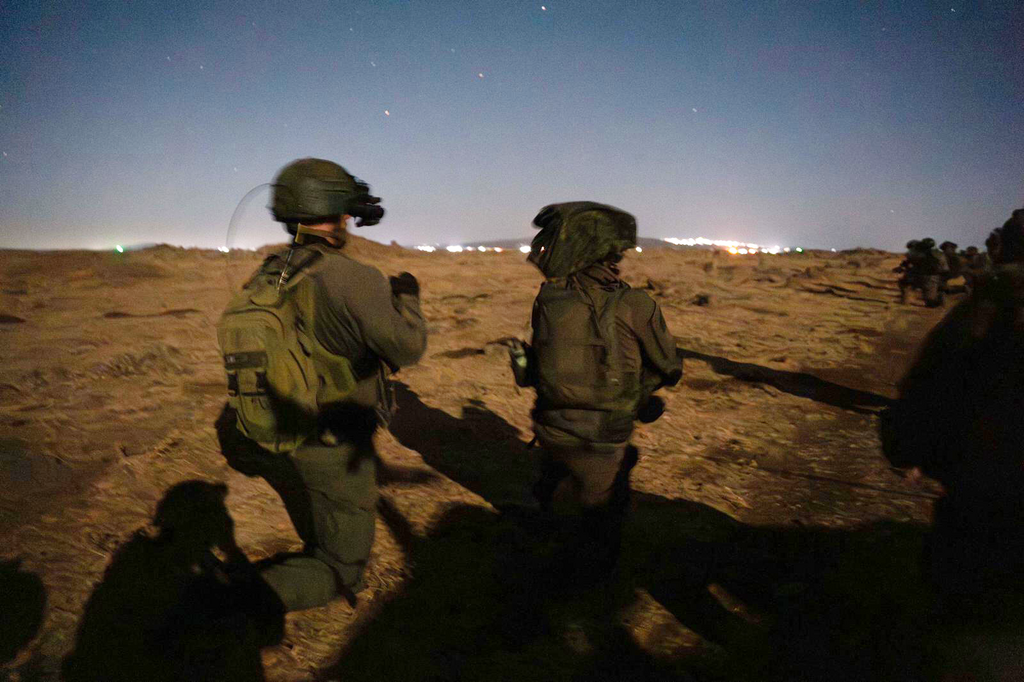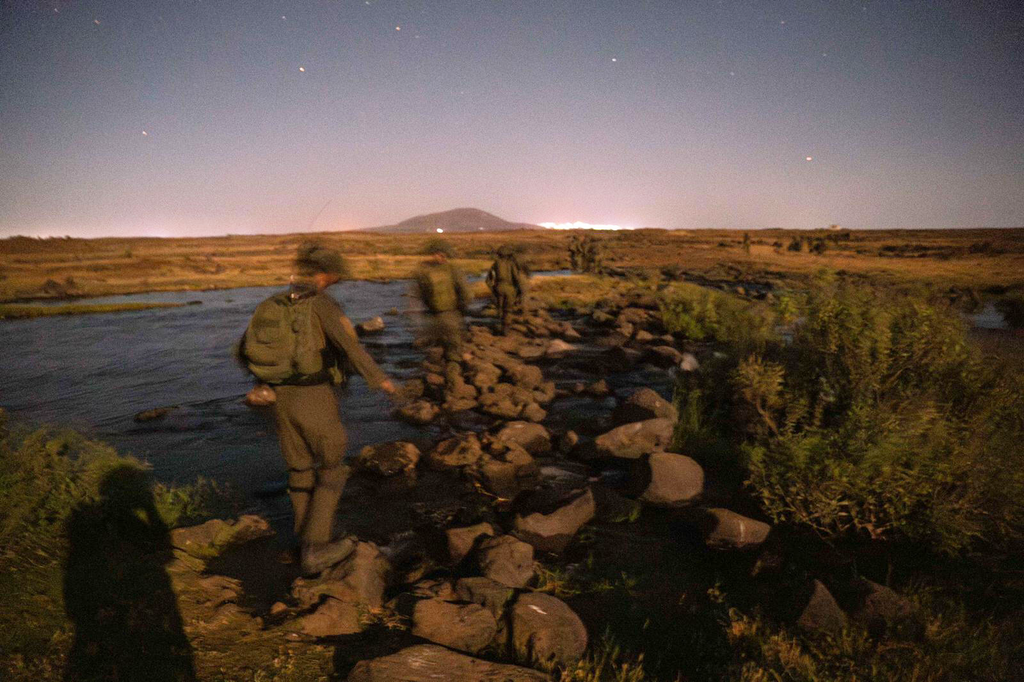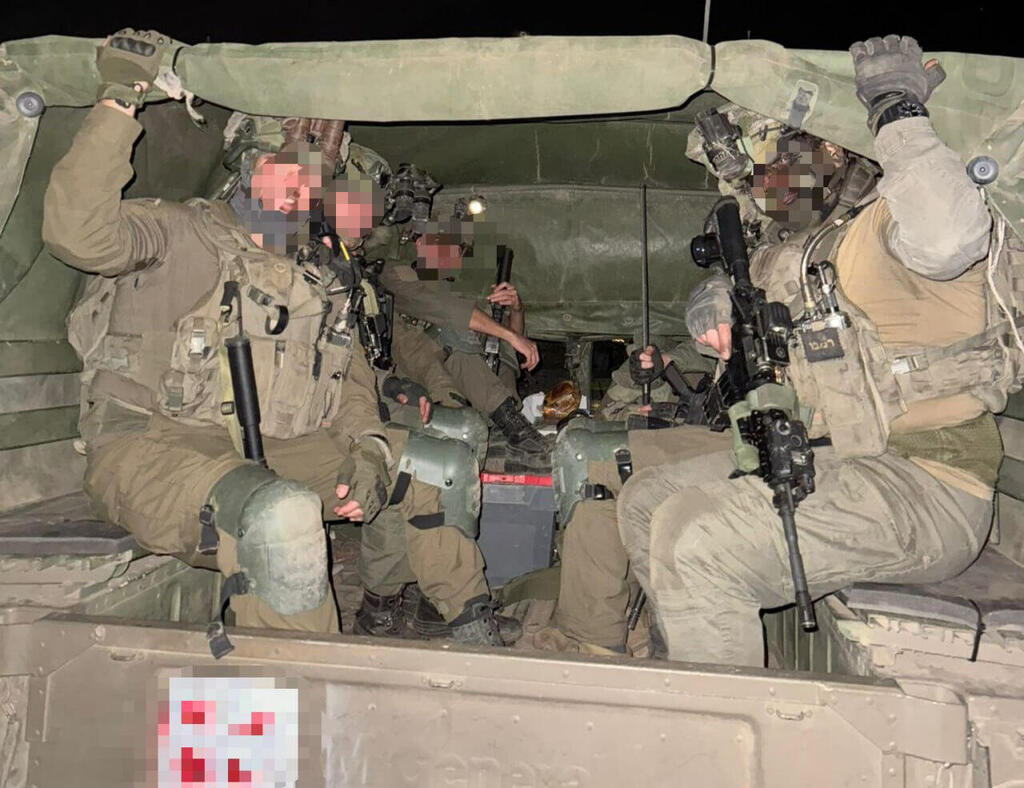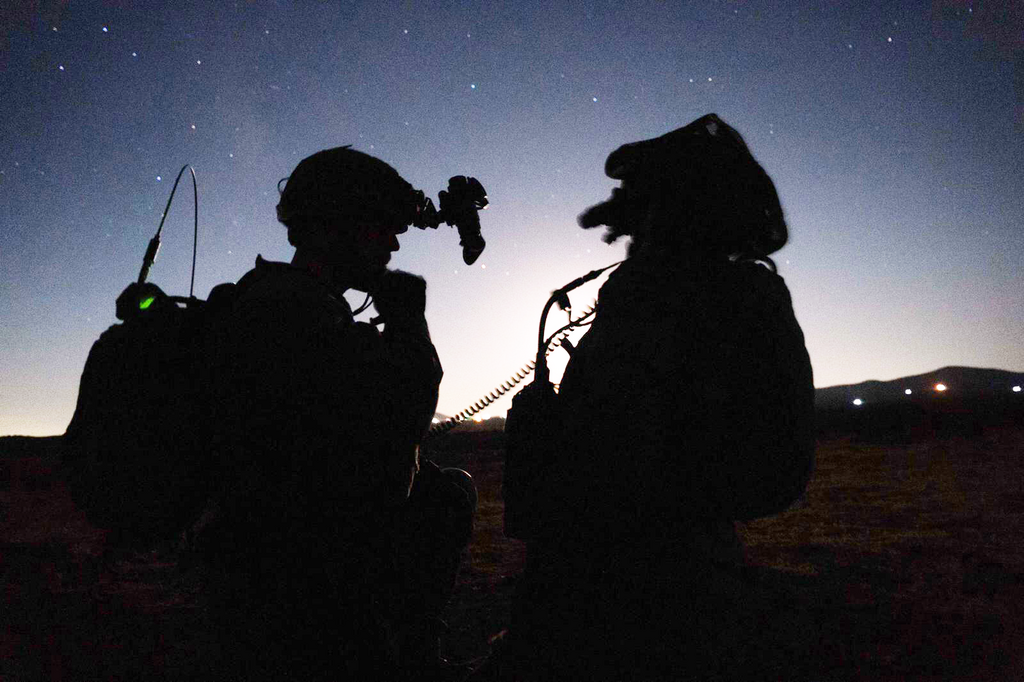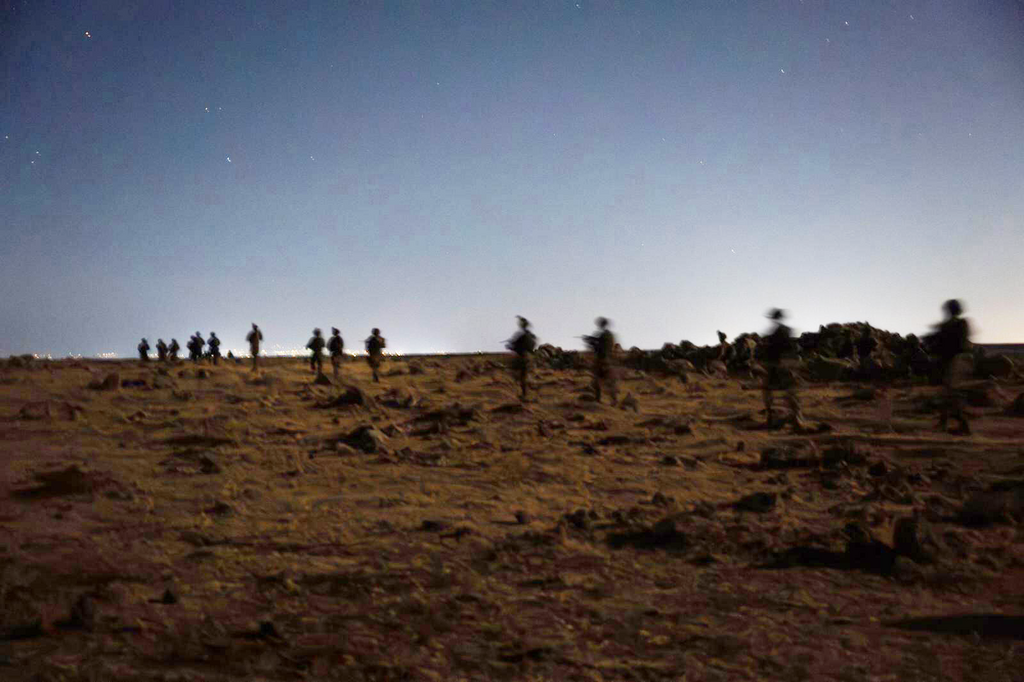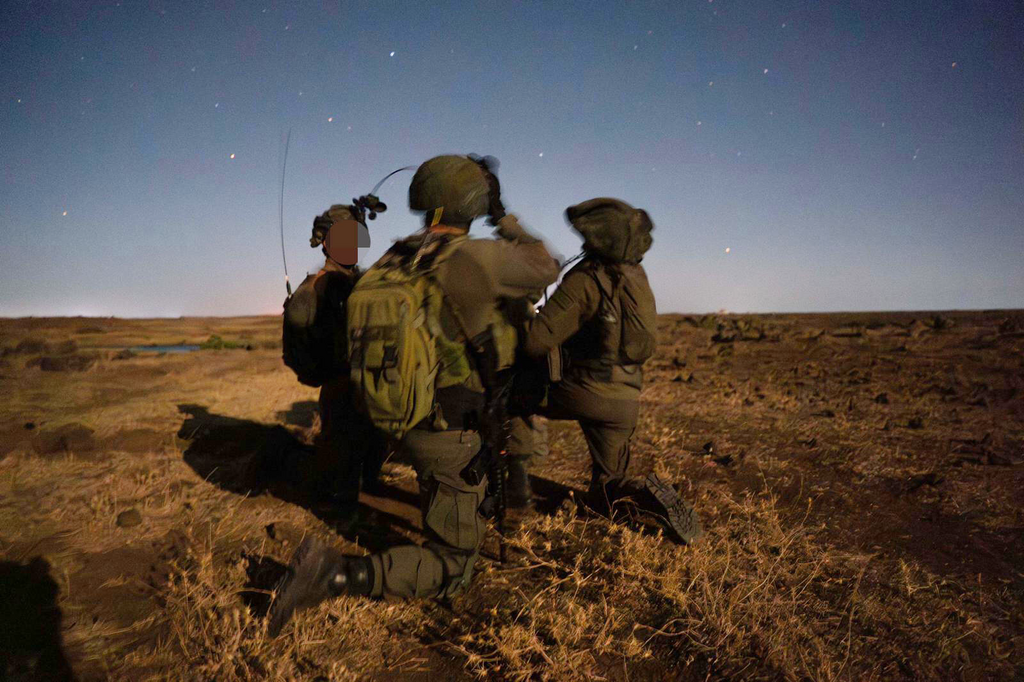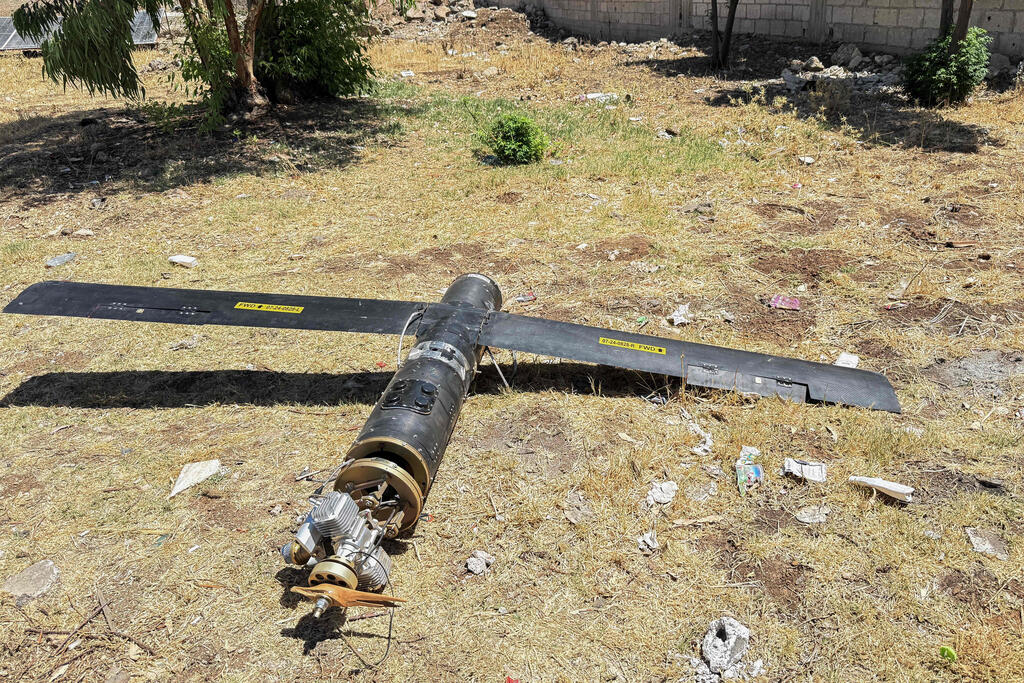“In the past, if you had asked me whether I’d lead an operation like this, I’d have told you you’re way off,” admitted Lt. Col. (res.) Y., commander of the Alexandroni Reserve Brigade’s 7012nd Battalion.
Just days earlier, he led his troops some 10 kilometers into Syrian territory in a covert overnight raid to arrest members of a terror cell operated by Iran’s Quds Force before they could carry out an attack on Israeli forces along the buffer zone. The operation remained classified until the team safely returned to Israeli territory.
7012nd Battalion troops arrest Iranian cell in Syria
(Video: IDF)
Once the exclusive domain of the most elite commando units, this mission was executed entirely by reservists—men who left their homes and jobs for extended deployment on the northern border. The risks were immense, but in post-Assad Syria—now under partial Israeli control—such operations have become almost routine, often coordinated by the 210th Division. These include repeated incursions into Syrian villages in the buffer zone and contact with the local population.
The arrests took place early Monday morning at 2:50 a.m. Hundreds of reservists under Lt. Col. Y.’s command waited silently deep inside Syria for the “Go” order to come through their radios. Acting simultaneously at multiple locations where cell members were sleeping, they knew even a minor noise could compromise the mission and allow the Iranian-directed operatives to escape.
Lt. Col. Y., 39, from Tel Aviv, recently married during his long reserve duty. He took command of the 7012nd Battalion just six weeks earlier. In this operation, he led his soldiers—some on foot, others in vehicles—into Syria and later praised their success. He said it was preceded by a lengthy period of intelligence gathering and planning aimed at dismantling a single cell, which he called only one part of Iran’s broader strategy to sow chaos on Israel’s northern front.
That broader plan, he explained, failed during the 12-day war with Iran due to Israel’s bolstered defenses beyond the Syrian border. Despite Tehran’s persistent efforts, Israeli operations have disrupted Iranian influence in the region.
This was the second time in a week that an Iranian-led Syrian force had been captured. “We’d been hearing about this cell for a very long time,” said Lt. Col. Y., confirming their plan was to strike Israeli forces in the buffer zone. “Iran has long tried to establish terror infrastructure here—tightening a noose around Israel from Lebanon, Syria and Jordan. Some remnants are still in the area, and it’s our job to stop them.”
“Extensive intelligence was gathered,” he added, citing Unit 8200 and other branches. The intel revealed a network of trained and equipped operatives spread across villages, awaiting orders. Though the specific locations are under military censorship, the operation reportedly took place near Tel Kodna.
Lt. Col. Y. described the mission’s complexity, noting that it wasn’t a single-target raid. “This was a surgical operation—to enter, extract, conduct an initial field interrogation, and withdraw with the targets back to staging areas and toward the Israeli border,” he said. “But the cell members were spread across multiple structures in varying terrain, which made the challenge twofold: maintaining secrecy and coordinating simultaneous actions due to the operatives’ close connections.”
The plan involved what he called an “orchestra” of specialized units, each with unique capabilities. Alongside the Alexandroni Brigade’s two reserve battalions—the 7012nd and its reconnaissance unit—were field interrogators from Unit 504, mobility troops from Unit 551, the elite K9 Unit Oketz, the Air Force’s 669 rescue unit and continuous aerial surveillance provided by the Israeli Air Force.
“The training before the mission was extremely intense,” Lt. Col. Y. said. “It required a long, meticulous preparation phase and a combat rehearsal process that was, let’s say, far from standard.” On the eve of the operation, under the cover of darkness in the Golan Heights, the units conducted a full-scale rehearsal on a mock-up terrain that replicated the mission zone down to the smallest detail.
The troops were fully geared and ran through silent infiltration drills, stealthy entries and seizure scenarios—carefully preparing for the mission’s complex execution.
On the night of the operation, every detail of the plan turned into action. “Each battalion infiltrated the area using its own method,” said Lt. Col. Y. “We walked several kilometers silently on foot inside Syrian territory. The entire operation was timed to the minute, synchronized across all battalions and companies involved, from the 7012nd Battalion to the reconnaissance unit.”
One soldier recalled the initial stage: “We had to cross the flowing Rukad River. Our boots were soaked, the challenge grew—but we all smiled with satisfaction.” Another added: “The march itself was impressive. Hundreds of fighters moved in total silence—even the dogs barely barked.”
As troops entered one of the villages, they noticed a stark contrast from the poorer areas of southern Syria. The homes, made of exposed concrete and cinder blocks, were lit by solar power. Each family compound was surrounded by basalt stone terraces planted with fruit trees. Kitchens had no running water, relying on jerrycans. Qur'anic verses adorned the walls, and the furniture was old, carved wood.
“All was quiet until the ‘go’ order,” said one soldier. “Then, in an instant, the cell members were overwhelmed by the full force of the IDF.” The breach teams moved in, backed by defensive and support units positioned with precise coordination for the moment when a Unit 504 interrogator confirmed the identity of the target.
At each location, a Unit 504 officer conducted a quick field interrogation of the captured suspects, while the teams had only minutes to search for weapons and gather intelligence. Their goal was to exit the area before locals realized what was happening and could organize a response.
“We kept uninvolved residents calm, without force or resistance,” said Alexandroni soldiers, describing the swift extraction.
The terrorists were completely caught off guard. In the operations room of the 210th Division, led by Brig. Gen. Yair Palay, there was visible relief: the arrests had been executed deep inside Syria without a single shot fired. “Even when they arrived in Israel, they couldn’t believe the IDF had pulled them from bed, blindfolded them—and suddenly, they were here,” one soldier said.
Back in Israel, the detainees are undergoing further interrogation by Unit 504 in what troops described as a psychological chess match to extract intelligence about active threats along the border.
Lt. Col. Y. added: “The retreat back to Israeli territory was a long, 30-minute drive through Syrian terrain—without headlights and in total silence. Thankfully, not a single bullet was fired. We operated like a well-oiled machine, battle-tested, alert and ready for anything.”
For Lt. Col. (res.) Y., this success was more than a tactical win—it symbolized the dramatic transformation of Israel’s reservist forces since the war began. “The operational readiness of our battalion, which fought in both Gaza and Lebanon, has improved significantly,” he said. “In the past, missions like this were the stuff of dreams for reservists—reserved only for elite IDF units.”
That evolution didn’t happen overnight. It was built over nearly 365 cumulative days of reserve duty in Israel’s most volatile arenas since October 7. The story of the 7012nd Battalion’s journey is one the author knows well.
In January 2024, they met on a different front: the frozen, high-tension Lebanese border near Metula. Back then, their job was purely defensive—acting as the north’s “human shield,” the final barrier against Hezbollah’s elite Radwan Force. Months before the IDF launched its ground offensive into Lebanon, they were ready to be deployed at a moment’s notice, though their orders were only to hold the line.
The path from guarding Metula to operating deep inside Syria—via a tour in Gaza—marks the battalion’s rapid evolution. Long months of patrols, combat and frontline presence have turned them into the “well-oiled machine” Lt. Col. Y. describes today. “When you enter Syrian territory in the dark of night, you can literally see and feel what it means to defend the Golan Heights,” he said. “Every soldier could sense it.”
Since May, Alexandroni troops have manned the buffer zone outposts along the Golan frontier. Daily life in Syria, they say, is filled with surreal moments—like the night Israel launched Operation Rising Lion against Iran.
“We were operating in a village,” Lt. Col. Y. recalled. “Around 3 a.m., during our foot withdrawal, one of my guys called and said he saw a distant light. Suddenly, the Air Force ordered us to ground all drones. We didn’t understand why—until I got a call from HQ saying the U.S. ambassador had just tweeted, ‘Pray for Jerusalem.’”
“As we returned to the outpost, the sirens started blaring,” he said. “That’s when we realized the Iranian attack had begun. I rushed back toward the Golan with my command team, and then the radio crackled with the message—just 15 minutes earlier, Israel had launched its strike on Iran. It was a powerful moment: a wall of soldiers, ready for anything.”
During the 12-day war with Iran, over 1,000 Iranian drones, hundreds of missiles and Israeli interceptors filled the skies. While the aerial battle raged, soldiers on the ground held the line against infiltration attempts and terror cells from Syria.
Even after their recent success, Lt. Col. Y. and his troops remain deployed at forward positions beyond the Golan border. “This is already our fourth—and longest—tour,” he said. “What’s unique is that every deployment came as a surprise. None of them were planned. Each time, it was an emergency call-up, overnight. We met you in Metula, then fought in Gaza, maneuvered in Lebanon and now we’re operating in Syria.”
The complex operation, hailed as a success, was summed up in a brief official IDF statement: “In a special overnight mission in southern Syria, IDF forces arrested a terror cell directed by Iran’s Quds Force. Acting on intelligence from Unit 504 interrogations, troops from the Alexandroni Brigade, under Division 210 and alongside field agents, carried out the arrest in the Tel Kodna area. This marks the second targeted night raid within a week, during which multiple operatives posing a threat in the area were apprehended.”

